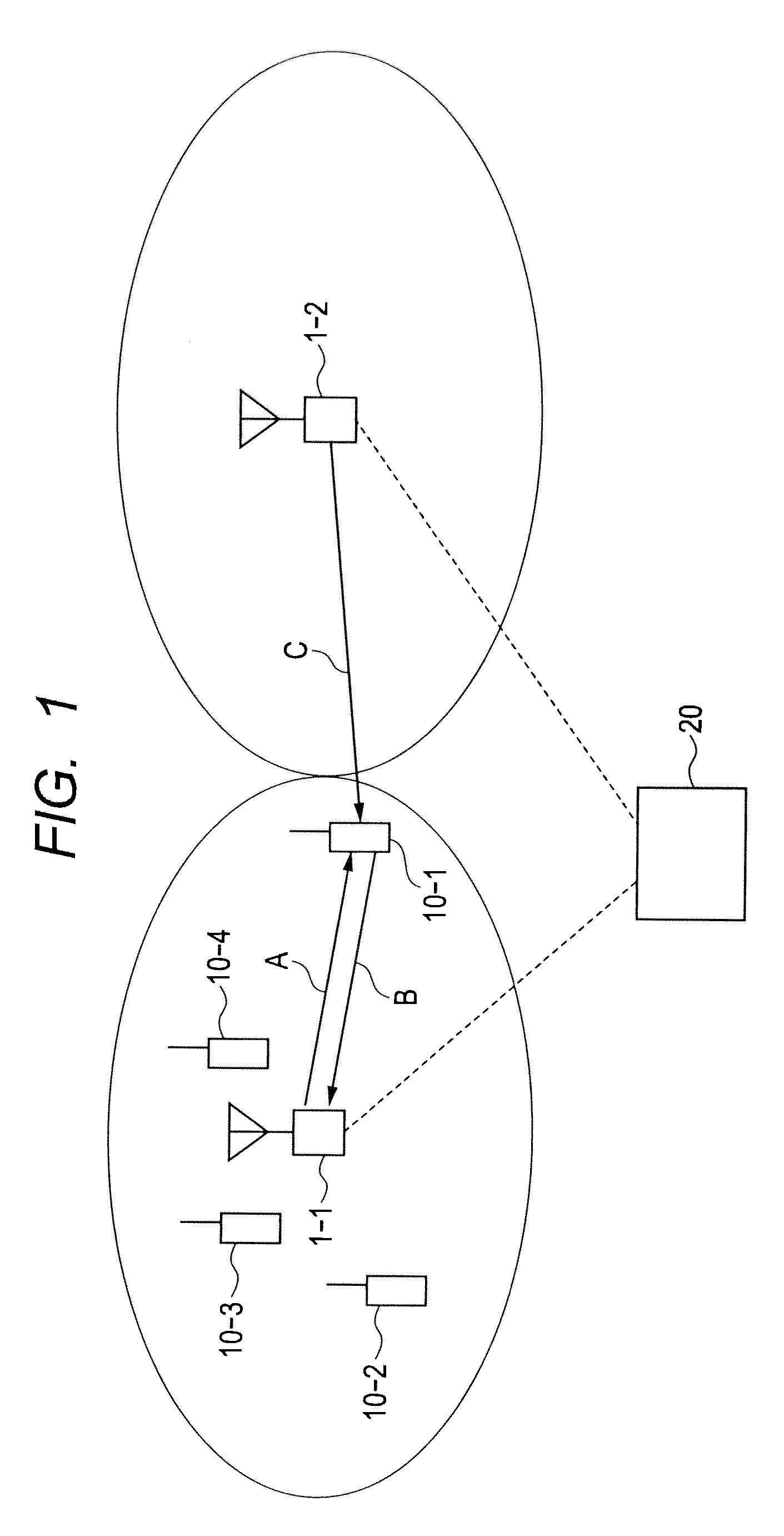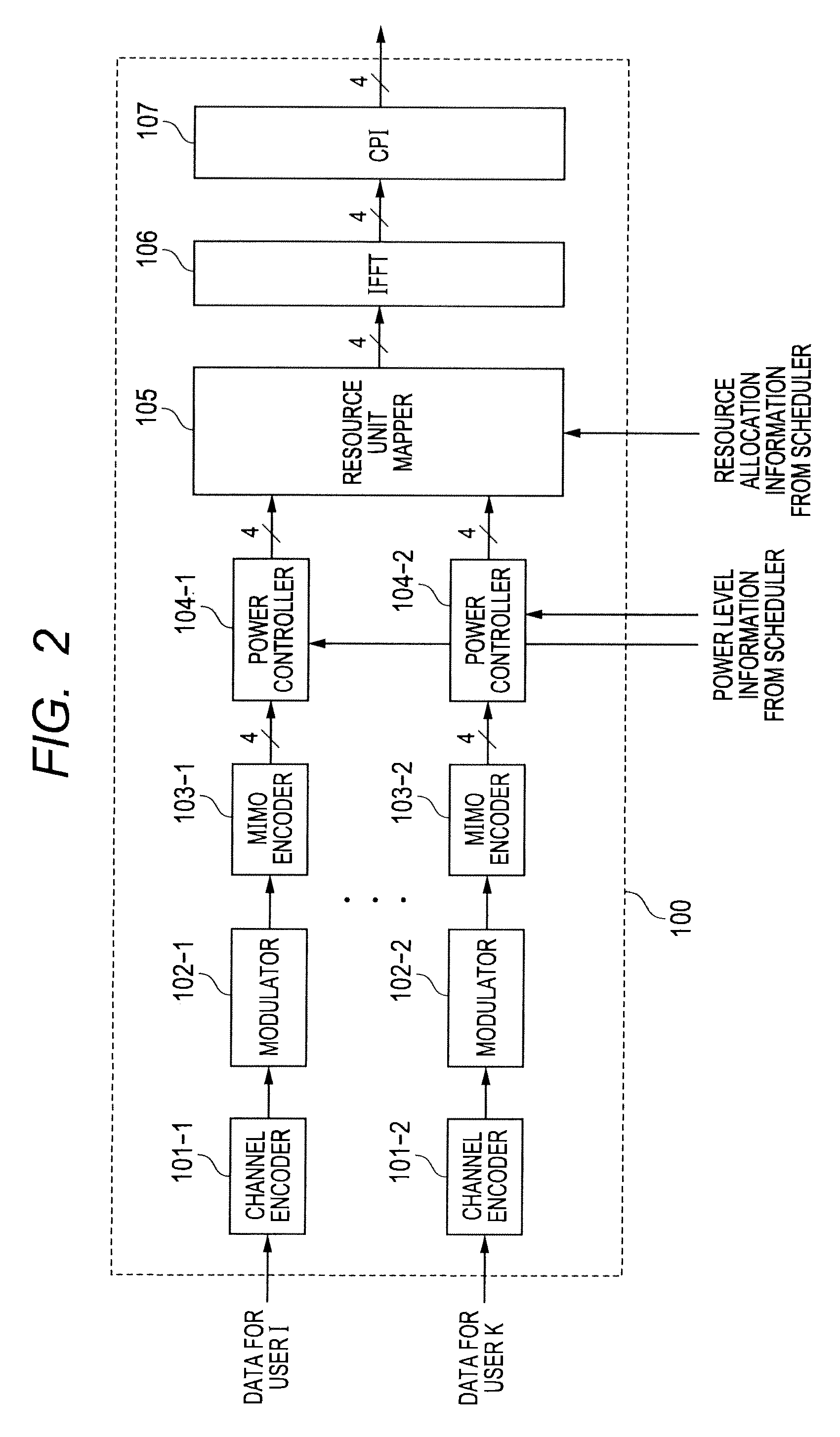Wireless communication system, wireless communication method, and base station device
a wireless communication and wireless communication technology, applied in diversity/multi-antenna systems, site diversity, high-level techniques, etc., can solve the problems of deteriorating sinr, difficult to transmit information with a high throughput rate, and interference between downlink signals a and c, so as to achieve balanced transmission power of each antenna
- Summary
- Abstract
- Description
- Claims
- Application Information
AI Technical Summary
Benefits of technology
Problems solved by technology
Method used
Image
Examples
first embodiment
[0041]It has been proposed in the fourth generation communications that the number of antennas of each of base stations and terminals is four or more. Regarding LIE-Advanced and IEEE802.16m, it has been discussed that each base station is provided with up to eight antennas and each terminal is provided with four antennas. However, signals are transmitted using two antennas in standard and basic operations.
[0042]In view of the foregoing, in the case where signals are basically transmitted using two antennas, plural antennas and frequency bands are effectively used to avoid concentration of power on specific antennas and to equalize transmission power between antennas in the first embodiment.
[0043]With reference to FIG. 5, a base station device will be described. In FIG. 5, abase station device 1 includes antennas 201, a Radio Frequency (RF) 202, a baseband signal processor 203, a CPU 204, a Network (NW) I / F 205, and a memory 206. The CPU 204 includes a scheduler 2041.
[0044]The NW I / F...
second embodiment
[0077]With reference to FIG. 12, operations of transmission power allocation / frequency resource allocation of a scheduler 2041 according to a second embodiment will be described. It should be noted that the configuration and the transmission signal process of the base station device in the second embodiment are the same as those in the first embodiment.
[0078]In FIG. 12, Step 201 and Step 202 are the same as Step 101 and Step 102 in FIG. 8.
[0079]Next, the scheduler 2041 selects sub-bands used for transmission belonging to 2-antenna transmission in each antenna (S203). Specifically, the scheduler 2041 selects sub-bands belonging to the lower half of frequencies among the areas where 2-antenna transmission is performed in the antennas 0 and 1, and selects sub-bands belonging to the other half in the antennas 2 and 3, so that sub-bands used for each antenna are determined. In each antenna, signals are not transmitted in the sub-bands that are not selected, and power allocation (to be de...
PUM
 Login to View More
Login to View More Abstract
Description
Claims
Application Information
 Login to View More
Login to View More - R&D
- Intellectual Property
- Life Sciences
- Materials
- Tech Scout
- Unparalleled Data Quality
- Higher Quality Content
- 60% Fewer Hallucinations
Browse by: Latest US Patents, China's latest patents, Technical Efficacy Thesaurus, Application Domain, Technology Topic, Popular Technical Reports.
© 2025 PatSnap. All rights reserved.Legal|Privacy policy|Modern Slavery Act Transparency Statement|Sitemap|About US| Contact US: help@patsnap.com



